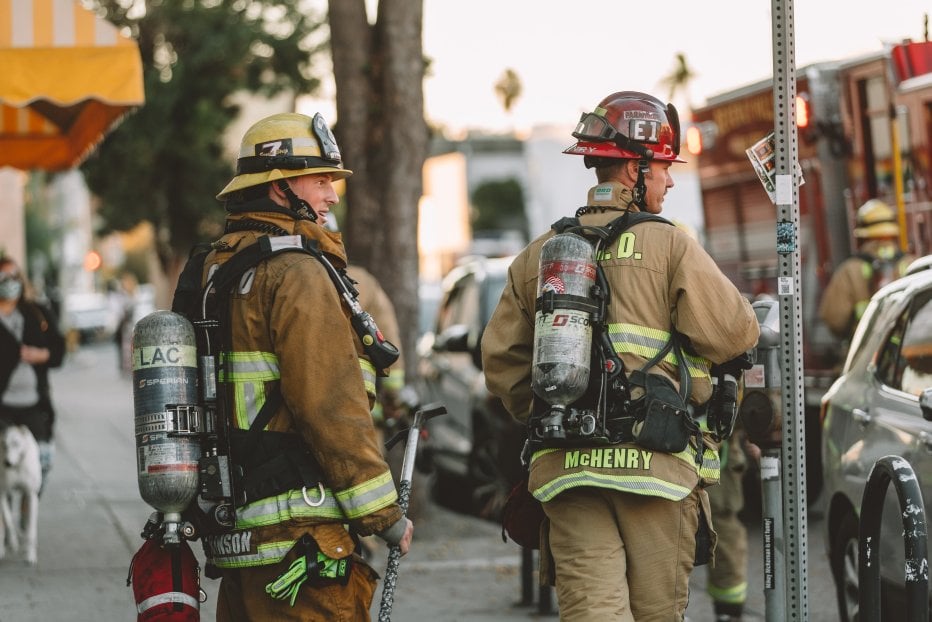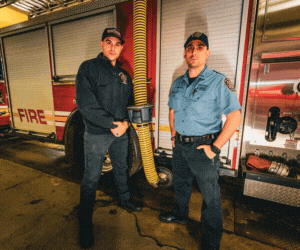Service Means Making Things Better

By: Bill Dungey
We ought to think more deeply about what it means to serve. Surely, our communities assume that when we respond to their call, we do so with the same vigor we brought to our initial job interview. By studying service and the intimate relationship we hold with the people who depend on us, our responses to the emergencies we’re called to attend can be even more mindful.
On active calls, we have the opportunity to connect with people from our community in resounding ways. Perhaps in a wholly unique way, because we’re called to be in such an emotionally charged atmosphere. Even in the frequent false alarm, we’re called because the people on the other side of the telecommunicator’s handset are requesting help. The fact alone that we’re the ones who come to that call places us in a position of authority which we need to reconcile in order to provide the best service possible.
Service is the act of helping. It’s supplying to a need.
When somebody is requesting help, they are automatically positioned in a state that is by definition vulnerable. To balance the vulnerability we encounter in those people with the drive to provide the work to resolve their problem places us in a complicated situation. Our influence on the outcome of the emergency is not isolated to the work we can produce with our hands. The current that moves under the problem that we arrive for is the dynamic flow of emotions between the responder, his team and the people affected by the goings on of the scene. To hold true to the ideal of service, that we are supplying to a need, we must hold this principle of our position at the very front of our minds. To respond to a crisis is not only to solve the problem but also to be present to the fragility of the people we’re helping with specific attention.
The role of ownership and firefighting
The most crucial part of our role is cemented in the ownership we take for our actions, our department and our community. Our involvement in the fire service is hinged on the help we can provide to the people who call for our crew. When we arrive, the capacity of our impact is a culmination of our training, our effort and our care. Therefore, we must hold ourselves personally accountable for the extra reps in the apparatus bay just as we should inside the squat rack.
Where a gap exists, the full breadth of our sacred service must jump at the opportunity for action. To allow a weakness in the chain that holds our community together in its darkest hour is to admit that we’re good enough.
Though, we are never good enough.
A question rides at the bottom of every interaction. Whether at the end of a long call or around the fire hall, the opportunity to serve is only limited by the amount of time and effort you’re willing to invest.
“What more can I do to help?”
The firehouse could be a platform for an unquenchable drive to help. Imagine a fire company that held this question extended at the end of every call. With such a simple and open question, we could enlist the ‘servant leadership mindset’ to enable our coworkers and community members to grow. From a concept introduced first in a paper from 1970, the servant leadership mindset begins with the same thing that brought you to the fire department in the first place; the will to serve. The difference between the servant leadership model and most others comes from the care taken to put the immediate needs of others first. In making sure we are working toward the growth of others, we enable them to be more free, more healthy and more likely to become a servant leader themselves(1).
On a call, this can take shape by the way we interact with people. A typical alarm call, while not exciting, can provide the chance to really connect with the people in our community. In most cases, this can be a simple conversation but in more rare occurrences, you may be able to help with shoveling snow or attending to a little one who may be nervous about the lights and sounds of the scene. Because of the authority our role has, an outstretched hand – physically and metaphorically – can lift someone out of the dark and into a more powerful position.
Our fair service is predicated on that. Lifting people from the depths of the unknown and into the light.
Our past builds the future
Heritage is what has been handed down to us. The physical things we can hold and places that we can stand in. Legacy is the respectful preservation of our heritage over time. Transcending the physical, it’s how we honour the tools and trucks. The uniform and our flag.
We commemorate our heritage in doing right by the people we serve – attending to personal development is as much a formal duty as our actions on the fireground.
The foundation we walk upon was set by servicemen and women that placed themselves second to their crew and community. They served not only by deed, but by driving forward the rites and traditions that encourage the way we serve. Despite the challenges, and there were challenges, they set about building a culture that would allow you the opportunity to carry their efforts into today’s fire service. For that chance and for every moment your presence at an emergency scene can affect positive change, you should steady yourself on the bedrock of service that legacy has created.
So lucky to have the occasion we’re asked to rise to, we’re offered a brick to help build for the future. If a hand reaches out from the black, no charge of will can force you to pull. In the height of their most intimate moment, it will be you and your crew who will answer their call.
When the tone drops for action, nobody will make sure you’re ready to keep raising our service. And you, faithful firefighter, will have a brick to place nonetheless. Where will you set it down?
Bill Dungey is a volunteer firefighter in Ontario, Canada. He is focused on fitness, mindset development and finding training opportunities to help the fire service make things better. His writing can be found at https://sixfeet.ca
Sources:
- What is servant leadership? Greenleaf Center for Servant Leadership. (n.d.). Retrieved February 16, 2022, from https://www.greenleaf.org/what-is-servant-leadership/
Podcast
Contests & Promotions
















